| A.S.S.E.Psi. web
site (History of Psychiatry and Psychoanalytic Psychotherapy )
A.S.S.E.Psi.NEWS (to
subscribe our monthly newsletter)
Ce.Psi.Di. (Centro
di Psicoterapia Dinamica "Mauro Mancia")
Maitres à dispenser
(Our reviews about psychoanalytic congresses)
Biblio Reviews
(Recensioni)
Congressi ECM (in italian)
Events (our
congresses)
Tatiana Rosenthal and
... other 'psycho-suiciders'
Thalassa. Portolano
of Psychoanalysis
PsychoWitz
- Psychoanalysis and Humor (...per ridere un po'!)
Giuseppe Leo's Art Gallery
Spazio
Rosenthal (femininity and psychoanalysis)
Psicoanalisi Europea Video Channel
A.S.S.E.Psi. Video Channel
Ultima uscita/New issue:
"Psychoanalysis
in a Holy Land" (English Edition)

Edited by Ambra Cusin & Giuseppe Leo
Writings by: H. Abramovitch A. Cusin
G. Leo M. Roth
M. P. Salatiello V. Volkan
Publisher:
Frenis Zero
Collection: Mediterranean Id-entities
Year: 2024
Pages: 227
ISBN: 978-88-97479-47-5
Click
here to buy the book/Compra su Amazon

"Supervision
and Psychoanalysis" (English edition)
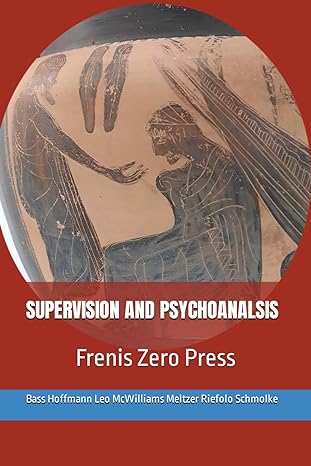
Edited by Giuseppe Leo
Writings by: A.
Bass N.
Hoffmann
G. Leo
N. McWilliams D. Meltzer
G.
Riefolo M. Schmolke et
al.
Publisher:
Frenis Zero
Collection: Borders of Psychoanalysis
Year: 2023
Pages: 200
ISBN: 978-88-97479-46-8
Click
here to buy the book/Compra su Amazon

"Supervisione e Psicoanalisi" (Italian
edition)

A cura di Giuseppe Leo
Scritti di A.
Bass N. Hoffmann G. Leo
N. McWilliams D. Meltzer G.
Riefolo M. Schmolke et
al.
Editore Frenis
Zero
Collana Confini
della Psicoanalisi
Anno 2023
Pagine 210
ISBN 978-88-97479-44-4
Click
here to buy the book/Compra su Amazon

"Why War in
Ukraine and in Europe? Psychoanalysis, Trauma, and Resiliency" (English
Edition)

Edited by Giuseppe Leo
Writings by: V. Blikhar N.
Kalka
H. Katolyk L. Kuzo G. Leo
A. Marchuk
M. Tsyvinska S. Varvin
V. D. Volkan K. Zaitseva
Publisher:
Frenis Zero
Collection: Mediterranean Id-entities
Year: 2023
Pages: 235
ISBN: 978-88-97479-42-0
Click
here to buy the book/Compra su Amazon

"Neuroscience
and Psychoanalysis" (3rd English Edition)
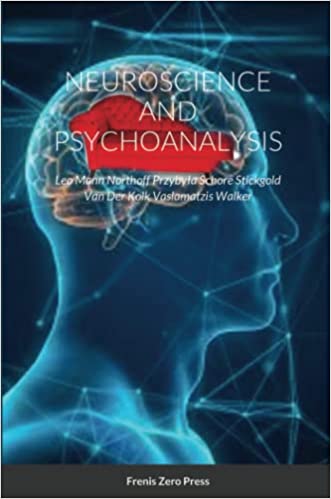
Edited by Giuseppe Leo
Writings by: D.
Mann
G.Northoff
J. Przybyła A. N.
Schore
R. Stickgold B.A. Van Der
Kolk G.
Vaslamatzis M.P. Walker
Publisher:
Frenis Zero
Collection: Psychoanalysis and Neuroscience
Year: 2023
Pages: 321
ISBN: 978-88-97479-40-6
Click
here to buy the book/Compra su Amazon

"Infant
research e psicoanalisi" (ediz. italiana)

A cura di: Giuseppe Leo
Scritti di: B.
Beebe K.
Lyons-Ruth J. P.
Nahum D. Schechter E. Solheim
C. Trevarthen E. Z.
Tronick
L. Vulliez-Coady
Editore: Frenis Zero
Collana: Confini della psicoanalisi
Year: 2022
Pages: 276
ISBN: 978-88-97479-38-3
Click
here to buy the book/Compra su Amazon

"Crisi ecologica e pandemia. Una sfida per la
psicoanalisi"

A cura di Giuseppe Leo
Scritti di: Hilda
Catz, Anna Ferruta, Marco Francesconi, Pietro R. Goisis, Robert
Hinshelwood Giuseppe Leo, Nancy McWilliams, Giuseppe Riefolo, Merav
Roth, Cosimo Schinaia, Daniela Scotto Di Fasano, Robert D. Stolorow
Editore: Frenis Zero
Collana: Confini della Psicoanalisi
Anno: 2022
Pages: 268
ISBN: 978-88-97479-36-9
Click
here to buy the book/Compra su Amazon

"Enactment in
Psicoanalisi"
(Edizione Italiana)
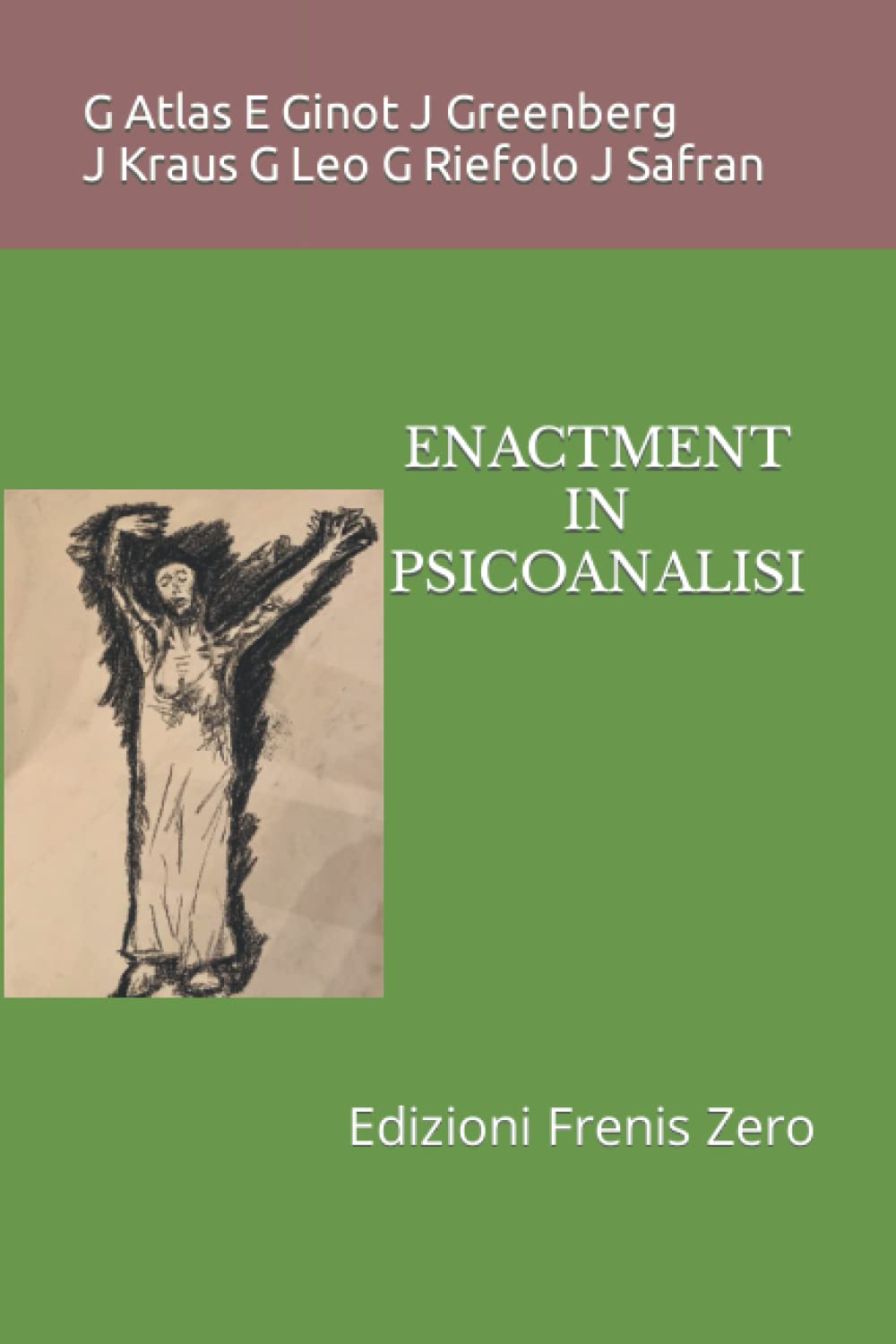
A cura di Giuseppe Leo &
Giuseppe Riefolo
Scritti di: Galit Atlas Efrat
Ginot
Jay Greenberg Jessica
Kraus Giuseppe
Leo Giuseppe
Riefolo Jeremy Safran
Editore: Frenis Zero
Collana: Confini della Psicoanalisi
Anno: 2022
Pages: 320
ISBN: 978-88-97479-34-5
Click
here to buy the book/Compra su Amazon

"Blown Lives. A Tale
for Spielrein, Gross, Tausk and the other losers of
psychoanalysis" by Giuseppe Leo
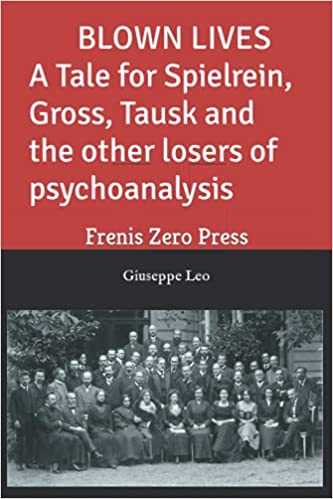
Editore/Publisher: Edizioni Frenis
Zero
ISBN: 978-88-97479-32-1
Anno/Year: 2021
Pages: 284
Click here to buy the
book/Compra su Amazon

"My Ideas Felt Like
Outsize Clothes. A tale for Etty Hillesum" (Second Edition)
by Giuseppe Leo
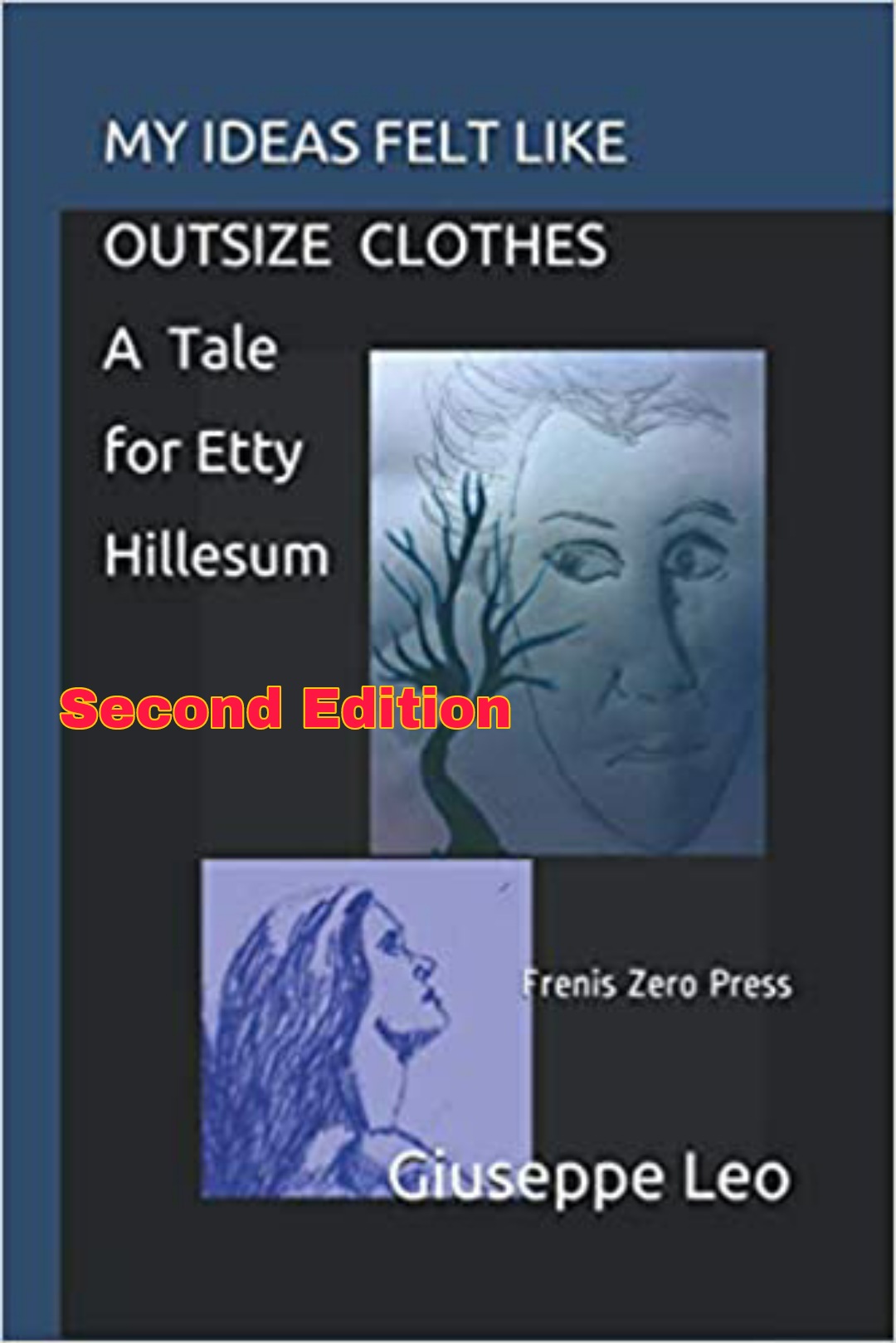
Editore/Publisher: Edizioni Frenis
Zero
ISBN: 978-88-97479-28-4
Anno/Year: 2021
Pages: 128
Click here to buy the
book/Compra su Amazon

"Infant
Research and Psychoanalysis" (Third Edition) edited by
Giuseppe Leo
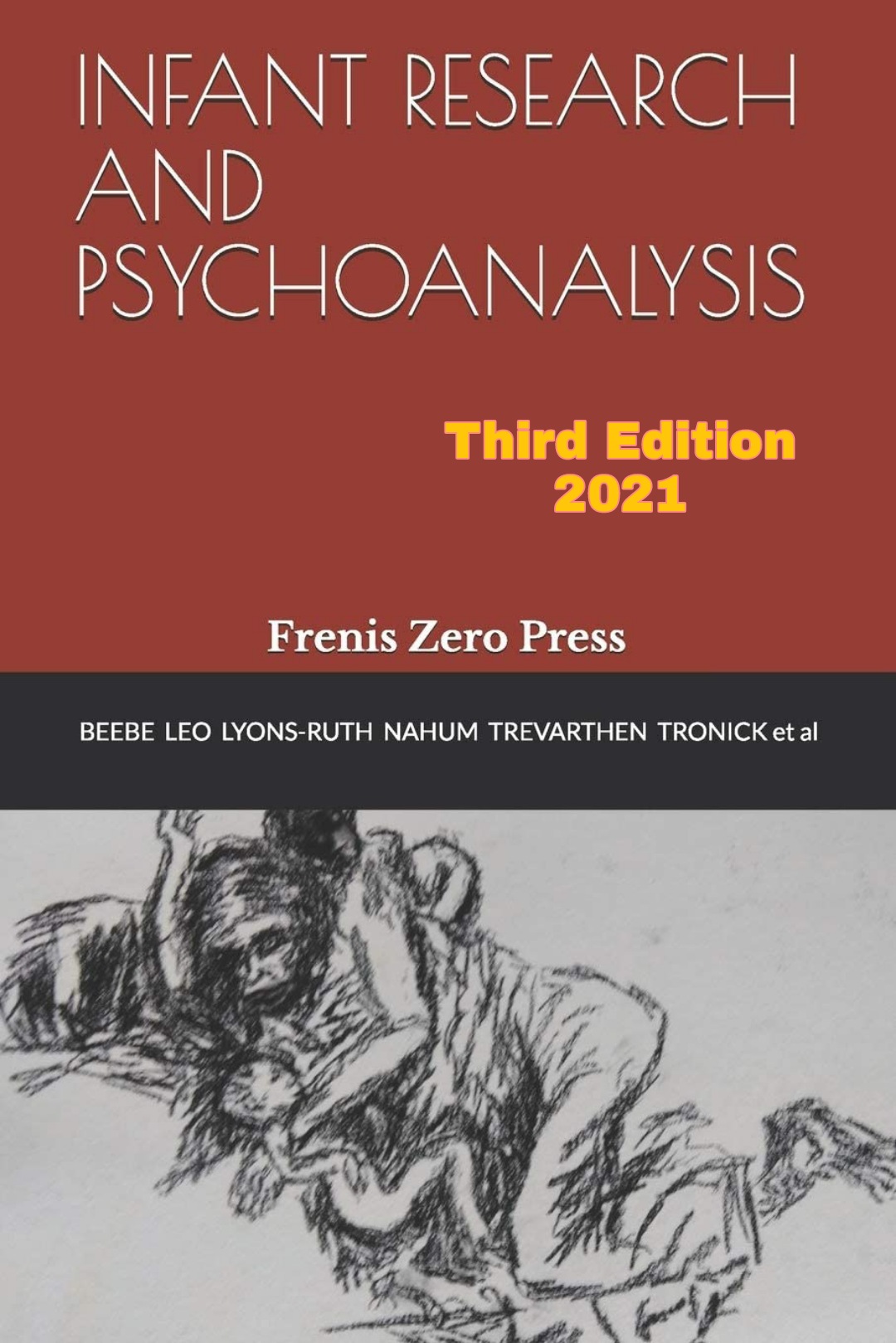
"
Edited by Giuseppe Leo
Writings by: B.
Beebe K. Lyons-Ruth J. P. Nahum D.
Schechter E. Solheim C.
Trevarthen E. Z.
Tronick
L. Vulliez-Coady
Publisher: Frenis Zero
Collection: Borders of Psychoanalysis
Year: 2021
Pages: 285
ISBN: 978-88-97479-24-6
Click
here to buy the book/Compra su Amazon

"Psychanalyse,
Lieux de Mémoire et Traumatismes Collectifs" (Third Edition) edited
by Giuseppe Leo
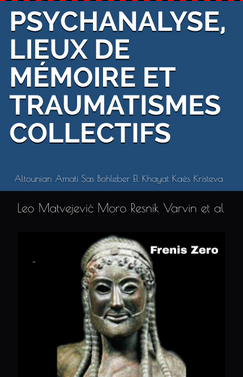
Writings by: J.
Altounian, S. Amati Sas, W. Bohleber, M. El Husseini, R. El Khayat, Y.
Gampel R. Kaës, J. Kristeva, G. Leo, A. Loncan, P. Matvejević, M.-R.
Moro, S. Resnik, S. Varvin
Editore/Publisher: Edizioni Frenis
Zero
ISBN: 978-88-97479-22-2
Anno/Year: 2021
Pages: 546
Click
here to buy the book/Compra su Amazon

"Enactment
in Psychoanalysis" - Second Edition) edited by Giuseppe Leo
& Giuseppe Riefolo
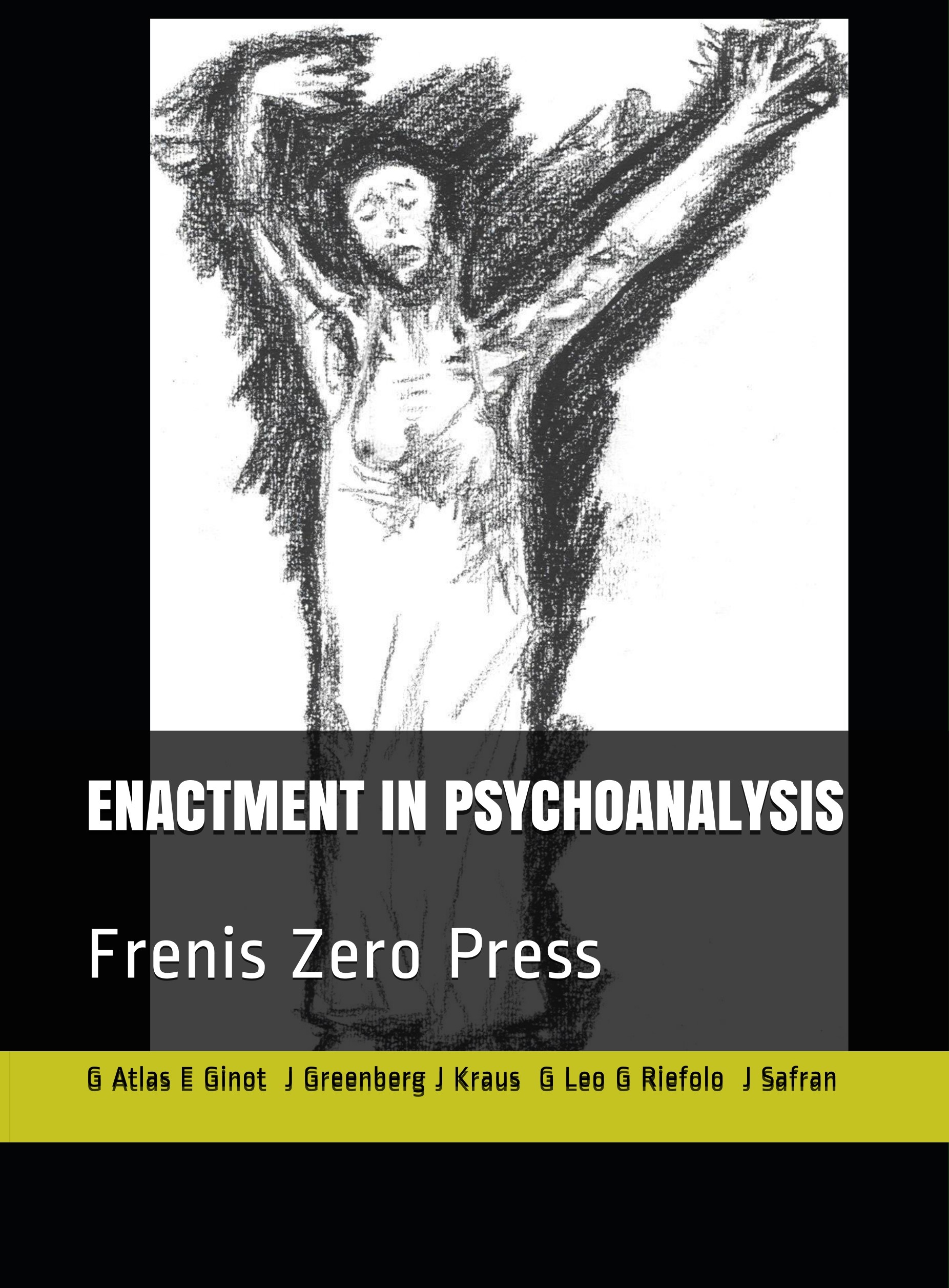
Edited by Giuseppe Leo &
Giuseppe Riefolo
Writings by: G. Atlas
E. Ginot J.R. Greenberg J.
Kraus J.D. Safran
Publisher: Frenis Zero
Collection: Borders of Psychoanalysis
Year: 2020
Pages: 333
ISBN: 978-88-97479-19-2
Click
here to buy the book/Compra su Amazon

"My Ideas Felt Like
Outsize Clothes. A tale for Etty Hillesum" by Giuseppe Leo
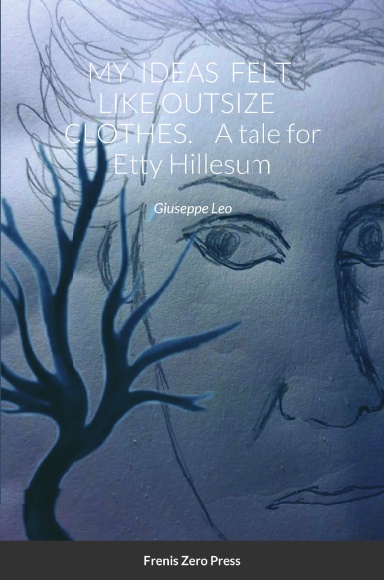
Editore/Publisher: Edizioni Frenis
Zero
ISBN: 978-88-97479-33-8
Anno/Year: 2020
Pages: 122
Click
here to order the book/Ordina
su Lulu

"Environmental
Crisis and Pandemic. A Challenge for Psychoanalysis" edited
by Giuseppe Leo (Second Edition)

Writings by: H.
Catz, A.
Ferruta,
M. Francesconi, P. R. Goisis, R. D. Hinshelwood, G. Leo, N.
McWilliams, G. Riefolo, M.
Roth, C. Schinaia, D. Scotto
Di Fasano, R. D. Stolorow
Editore/Publisher: Edizioni Frenis
Zero
ISBN: 978-88-97479-37-6
Anno/Year: 2020
Pages: 312
Click
here to order the book/Ordina
su Lulu

Click
here to buy the book/Compra su Amazon

"Psychanalyse,
Lieux de Mémoire et Traumatismes Collectifs" sous la direction
de Giuseppe Leo
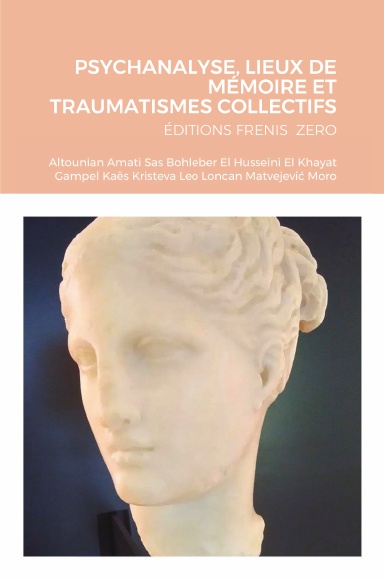
Writings by: J.
Altounian, S. Amati Sas, W. Bohleber, M. El Husseini, R. El Khayat, Y.
Gampel R. Kaës, J. Kristeva, G. Leo, A. Loncan, P. Matvejević, M.-R.
Moro
Editore/Publisher: Edizioni Frenis
Zero
ISBN: 978-88-97479-29-1
Anno/Year: 2020
Pages: 482
Click
here to order the book/Ordina
su Lulu

"Fear
of Lockdown. Psychoanalysis, Pandemic Discontents and Climate
Change" edited by Giuseppe
Leo
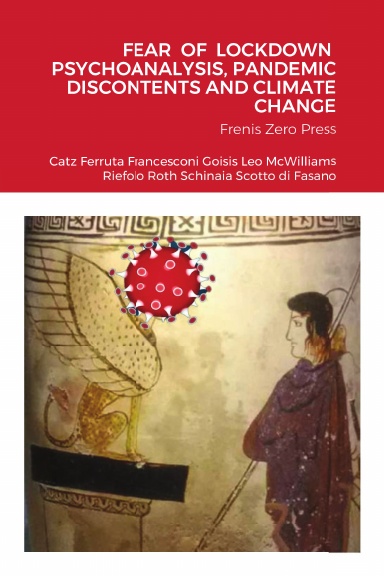
Writings by: H.
Catz, A.
Ferruta,
M. Francesconi, P. R. Goisis, G.
Leo, N. McWilliams, G.
Riefolo, M. Roth, C.
Schinaia, D. Scotto Di Fasano
Editore/Publisher: Edizioni Frenis
Zero
ISBN: 978-88-97479-21-5
Anno/Year: 2020
Pages: 295
Click
here to order the book/Ordina
su Lulu

Click
here to buy the book/Compra su Amazon

"Rock Music & Psychoanalysis"
Second Edition
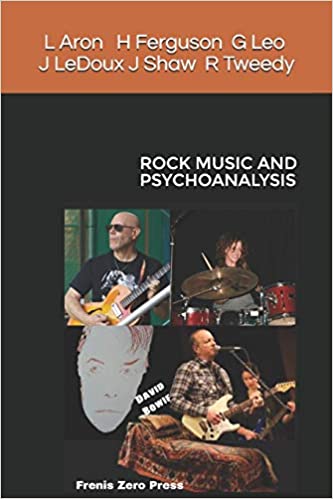
Edited
by: Giuseppe Leo
Authored
by/autori: Lewis
Aron Heather
Ferguson Joseph LeDoux Giuseppe Leo John
Shaw Rod Tweedy
Editore/Publisher: Edizioni Frenis Zero
Collection/Collana: Borders
of Psychoanalysis
Anno/Year: 2020
Pagine/Pages: 221
ISBN:978-88-97479-35-2
Click
here to buy the book/Compra su Amazon

"Essere nella cura"

Authored
by/autori: Giacomo
Di Marco & Isabella
Schiappadori
Editore/Publisher: Edizioni Frenis Zero
Collection/Collana: Confini
della Psicoanalisi
Anno/Year: 2019
Pagine/Pages: 210
ISBN:978-88-97479-17-8
Click
here to order the book
"Enactment
in Psychoanalysis"
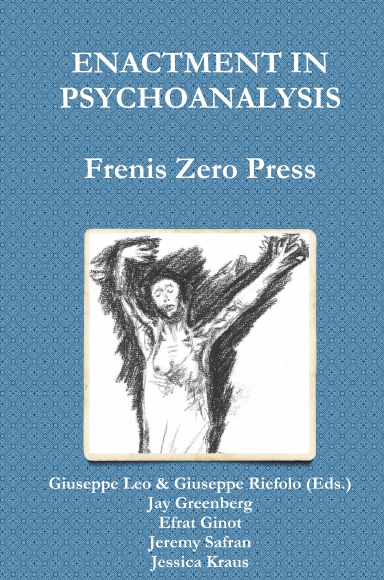
Edited by Giuseppe Leo &
Giuseppe Riefolo
Writings by: E.
Ginot J.R. Greenberg J. Kraus J.D. Safran
Publisher: Frenis Zero
Collection: Borders of Psychoanalysis
Year: 2019
Pages: 326
ISBN: 978-88-97479-15-4
Click
here to order the book
"Infant Research and Psychoanalysis"

Edited by Giuseppe Leo
Writings by: B.
Beebe K. Lyons-Ruth J. P. Nahum E. Solheim C.
Trevarthen E. Z. Tronick L.
Vulliez-Coady
Publisher: Frenis Zero
Collection: Borders of Psychoanalysis
Year: 2018
Pages: 273
ISBN: 978-88-97479-14-7
Click
here to order the book
"Fundamentalism
and Psychoanalysis"
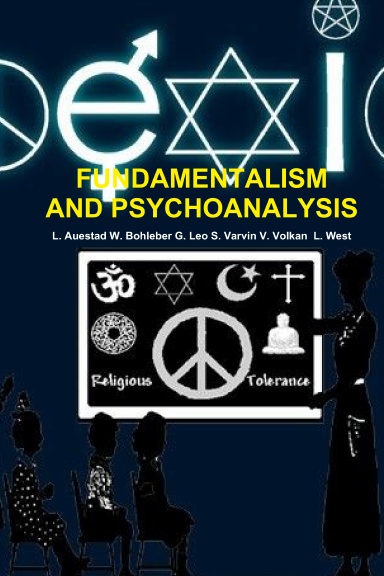
Edited by Giuseppe Leo
Prefaced by: Vamik D. Volkan
Writings by: L.
Auestad W. Bohleber S. Varvin
L. West
Publisher: Frenis Zero
Collection: Mediterranean Id-entities
Year: 2017
Pages: 214
ISBN: 978-88-97479-13-0
Click
here to order the book
"Psicoanalisi,
luoghi della resilienza ed immigrazione"

Edited
by/a cura di: Giuseppe Leo
Writings by/scritti
di:
S. Araùjo Cabral, L.
Curone,
M. Francesconi,
L.
Frattini,
S. Impagliazzo, D. Centenaro Levandowski, G. Magnani, M. Manetti, C.
Marangio, G.
A. Marra e Rosa, M.
Martelli,
M. R. Moro, R. K. Papadopoulos,
A. Pellicciari,
G. Rigon,
D. Scotto di Fasano, E. Zini, A. Zunino
Editore/Publisher: Edizioni Frenis Zero
Collection/Collana: Mediterranean
Id-entities
Anno/Year: 2017
Pagine/Pages: 372
ISBN:978-88-97479-11-6
Click
here to order the book
"Psicoanalisi
in Terra Santa"
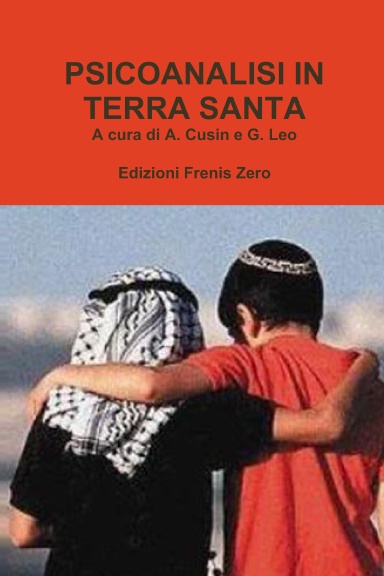
Edited
by/a cura di: Ambra Cusin & Giuseppe Leo
Prefaced by/prefazione
di:
Anna Sabatini Scalmati
Writings by/scritti
di:
H. Abramovitch A. Cusin M.
Dwairy A. Lotem M.
Mansur M. P. Salatiello Afterword
by/ Postfazione
di:
Ch. U.
Schminck-Gustavus
Notes by/ Note di: Nader Akkad
Editore/Publisher: Edizioni Frenis Zero
Collection/Collana: Mediterranean
Id-entities
Anno/Year: 2017
Pagine/Pages: 170
ISBN:978-88-97479-12-3
Click
here to buy the book
"Essere
bambini a Gaza. Il trauma infinito"

Authored
by/autore: Maria
Patrizia
Salatiello
Editore/Publisher: Edizioni Frenis Zero
Collection/Collana: Mediterranean
Id-entities
Anno/Year: 2016
Pagine/Pages: 242
ISBN:978-88-97479-08-6
Click
here to buy the book
Psychoanalysis,
Collective Traumas and Memory Places (English Edition)
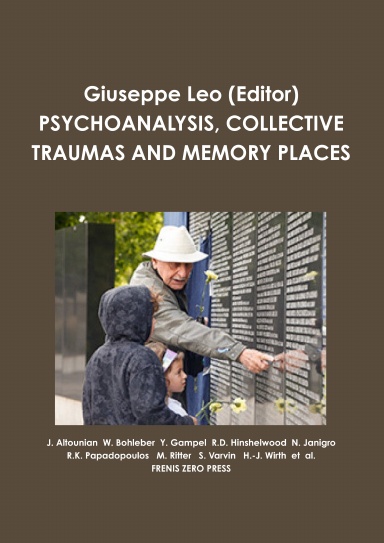
Edited
by/a cura di: Giuseppe Leo Prefaced by/prefazione
di:
R.D.Hinshelwood
Writings by/scritti di: J.
Altounian W.
Bohleber J.
Deutsch
H. Halberstadt-Freud Y.
Gampel
N. Janigro R.K.
Papadopoulos
M. Ritter S. Varvin H.-J. Wirth
Editore/Publisher: Edizioni Frenis Zero
Collection/Collana: Mediterranean
Id-entities
Anno/Year: 2015
Pagine/Pages: 330
ISBN:978-88-97479-09-3
Click
here to buy the book
"L'uomo dietro al lettino" di Gabriele Cassullodi Gabriele Cassullodi Gabriele Cassullo

Prefaced by/prefazione di: Jeremy
Holmes
Editore/Publisher: Edizioni Frenis Zero
Collection/Collana: Biografie
dell'Inconscio
Anno/Year: 2015
Pagine/Pages: 350
ISBN:978-88-97479-07-9
Click here to order the book
"Neuroscience
and Psychoanalysis" (English Edition)

Edited by/a cura di: Giuseppe Leo
Prefaced by/prefazione di:
Georg Northoff
Writings by/scritti di: D.
Mann A. N. Schore R.
Stickgold
B.A. Van Der
Kolk
G. Vaslamatzis M.P. Walker
Editore/Publisher:
Edizioni Frenis Zero
Collection/Collana: Psicoanalisi e
neuroscienze
Anno/Year: 2014
Pagine/Pages: 300
ISBN:978-88-97479-06-2
Click
here to order the book
Vera
Schmidt, "Scritti su psicoanalisi infantile ed educazione"

Edited by/a cura di: Giuseppe
Leo
Prefaced by/prefazione di:
Alberto
Angelini
Introduced by/introduzione di:
Vlasta
Polojaz
Afterword by/post-fazione di: Rita
Corsa
Editore/Publisher: Edizioni Frenis
Zero
Collana: Biografie dell'Inconscio
Anno/Year: 2014
Pagine/Pages: 248
ISBN:978-88-97479-05-5
Click
here to order the book
Resnik,
S. et al. (a cura di Monica Ferri), "L'ascolto dei sensi e dei
luoghi nella relazione terapeutica"

Writings by:A.
Ambrosini, A. Bimbi, M.
Ferri,
G. Gabbriellini, A. Luperini, S.
Resnik,
S. Rodighiero, R. Tancredi, A. Taquini
Resnik, G. Trippi
Editore/Publisher: Edizioni Frenis
Zero
Collana: Confini della Psicoanalisi
Anno/Year: 2013
Pagine/Pages: 156
ISBN:978-88-97479-04-8
Click
here to order the book
Silvio
G. Cusin, "Sessualità e conoscenza"
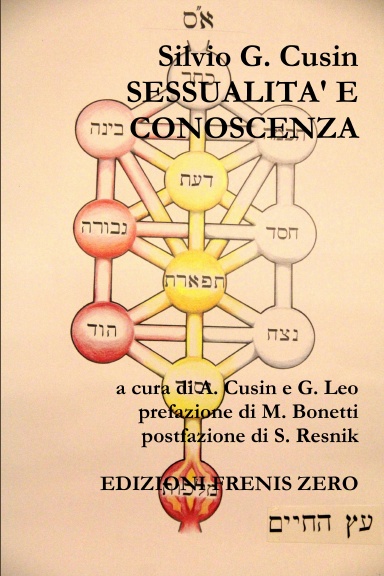
A cura di/Edited by: A. Cusin
& G. Leo
Editore/Publisher: Edizioni Frenis
Zero
Collana/Collection: Biografie
dell'Inconscio
Anno/Year: 2013
Pagine/Pages: 476
ISBN: 978-88-97479-03-1
Click
here to order the book
AA.VV.,
"Psicoanalisi e luoghi della riabilitazione", a cura di G. Leo e G.
Riefolo (Editors)
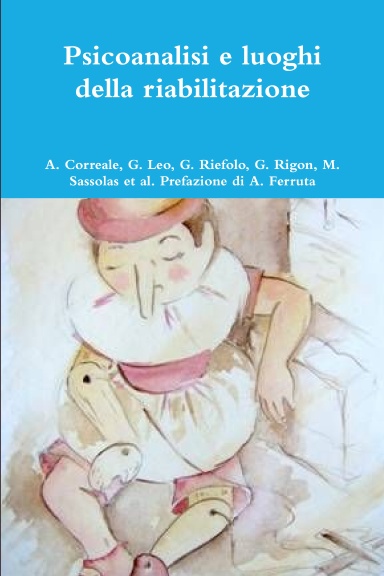
A cura di/Edited by: G. Leo
& G. Riefolo
Editore/Publisher: Edizioni Frenis
Zero
Collana/Collection: Id-entità
mediterranee
Anno/Year: 2013
Pagine/Pages: 426
ISBN: 978-88-903710-9-7
Prezzo/Price:
€ 39,00
Click
here to order the book
AA.VV.,
"Scrittura e memoria", a cura di R. Bolletti (Editor)

Writings by: J. Altounian, S. Amati Sas, A. Arslan,
R. Bolletti, P. De Silvestris, M. Morello, A. Sabatini Scalmati.
Editore/Publisher: Edizioni Frenis
Zero
Collana: Cordoglio e pregiudizio
Anno/Year: 2012
Pagine/Pages: 136
ISBN: 978-88-903710-7-3
Click
here to order the book
AA.VV.,
"Lo
spazio velato. Femminile e
discorso
psicoanalitico"
a cura di G. Leo e L. Montani (Editors)

Writings by: A. Cusin, J. Kristeva, A. Loncan, S.
Marino, B. Massimilla, L. Montani, A. Nunziante Cesaro, S. Parrello, M.
Sommantico, G. Stanziano, L. Tarantini, A. Zurolo.
Editore/Publisher: Edizioni Frenis
Zero
Collana: Confini della psicoanalisi
Anno/Year: 2012
Pagine/Pages: 382
ISBN: 978-88-903710-6-6
Click
here to order the book
AA.VV., Psychoanalysis and its Borders, a cura di G. Leo (Editor)
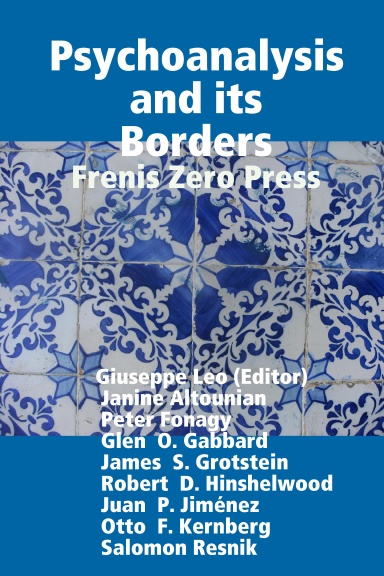
Writings by: J.
Altounian, P. Fonagy, G.O. Gabbard, J.S. Grotstein, R.D. Hinshelwood,
J.P. Jimenez, O.F. Kernberg, S. Resnik.
Editore/Publisher: Edizioni Frenis
Zero
Collana/Collection: Borders of
Psychoanalysis
Anno/Year: 2012
Pagine/Pages: 348
ISBN: 978-88-974790-2-4
Click
here to order the book
AA.VV.,
"Psicoanalisi e luoghi della negazione", a cura di A. Cusin e G. Leo
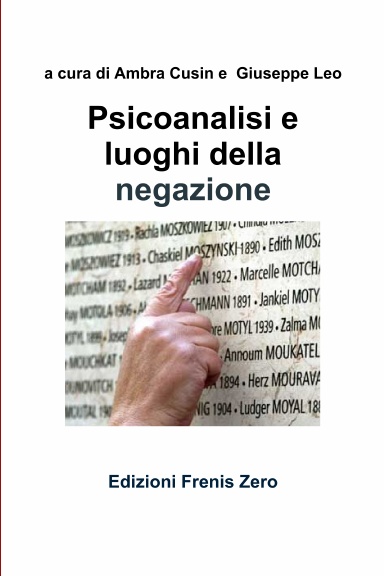
Writings by:J.
Altounian, S. Amati Sas, M. e M. Avakian, W. A.
Cusin, N. Janigro, G. Leo, B. E. Litowitz, S. Resnik, A.
Sabatini Scalmati, G. Schneider, M. Šebek,
F. Sironi, L. Tarantini.
Editore/Publisher: Edizioni Frenis
Zero
Collana/Collection: Id-entità
mediterranee
Anno/Year: 2011
Pagine/Pages: 400
ISBN: 978-88-903710-4-2
Click
here to order the book
"The
Voyage Out" by Virginia Woolf

Editore/Publisher: Edizioni Frenis
Zero
ISBN: 978-88-97479-01-7
Anno/Year: 2011
Pages: 672
Click
here to order the book
"Psicologia
dell'antisemitismo" di Imre Hermann

Author:Imre Hermann
Editore/Publisher: Edizioni Frenis
Zero
ISBN: 978-88-903710-3-5
Anno/Year: 2011
Pages: 158
Click
here to order the book
"Vite
soffiate. I vinti della psicoanalisi" di
Giuseppe Leo
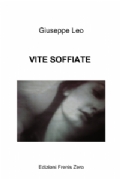
Editore/Publisher: Edizioni Frenis
Zero
Edizione: 2a
ISBN: 978-88-903710-5-9
Anno/Year: 2011
Click
here to order the book
"La Psicoanalisi
e i suoi confini" edited by Giuseppe Leo
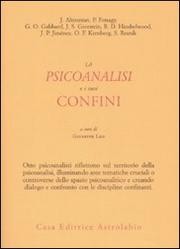
Writings by: J. Altounian, P. Fonagy, G.O. Gabbard, J.S. Grotstein,
R.D. Hinshelwood, J.P. Jiménez, O.F. Kernberg, S. Resnik
Editore/Publisher: Astrolabio
Ubaldini
ISBN: 978-88-340155-7-5
Anno/Year: 2009
Pages: 224
Prezzo/Price: € 20,00
"La
Psicoanalisi. Intrecci Paesaggi Confini"
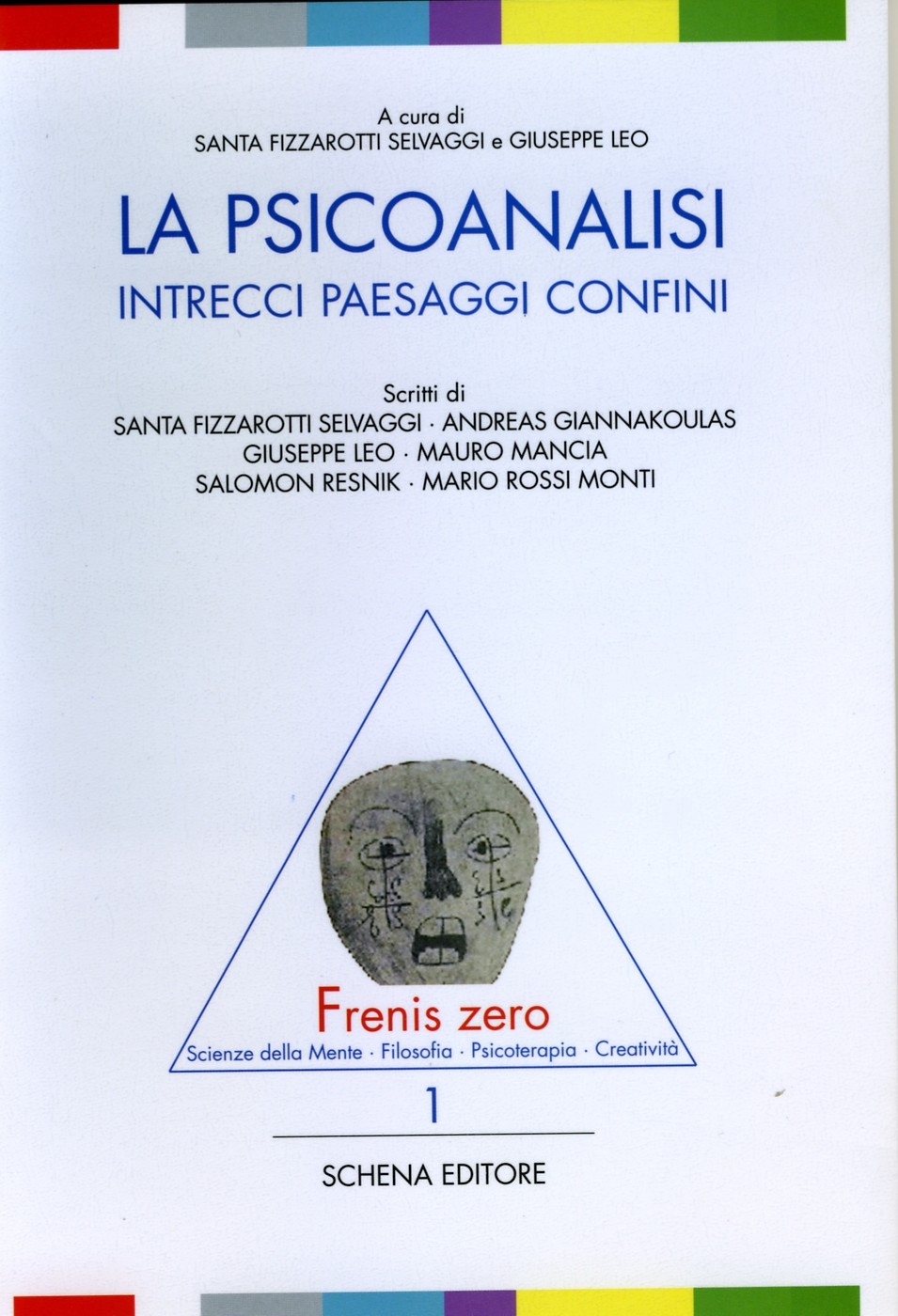
Edited by S. Fizzarotti Selvaggi, G.Leo.
Writings by: Salomon Resnik, Mauro Mancia,
Andreas Giannakoulas, Mario Rossi Monti, Santa Fizzarotti Selvaggi,
Giuseppe Leo.
Publisher: Schena Editore
ISBN 88-8229-567-2
Price: € 15,00
Click
here to order the book
|
INTRODUCTION
Mental disorders represent a significant public health concern,
producing an enormous economic burden for society and great suffering
for patients as well as their families andcommunities.
After almost 3 years of the COVID-19 pandemic, the situation has
worsened, creating increased urgency to strengthen mental health
systems in most countries (COVID-19 Mental Disorders Collaborators,
2021).
Although the biopsychosocial model is shared by the World Health
Organization’s International Classification of Functioning (WHO ICF),
the previous biomedical model of mental disorders is nowadays
anachronistic but still pervasive, with supporters among clinicians and
researchers, thereby threatening the understanding of highly complex
phenomena, such as the human mental suffering. In addition to a more
complex etiopathogenesis of mental disorders supported by the
biopsychosocial model, compared to the biomedical model, a more complex
approach to therapy also exists. Among the major criticisms of the
biomedical model, especially related to mental disorders, its reductive
view of etiopathogenesis and approach to therapy are the most important
concerns.
Pre-COVID studies have shown that at least one person out of two (50%
of the high-income countries’ population) will be diagnosed with a
psychiatric disorder in their life (Wittchen et al., 2011), most
commonly anxiety and depressive disorders. Antidepressants are
currently among the most frequently prescribed medications worldwide,
being taken by
more than 10% of the general population annually in highincome
countries (Jorm et al., 2017; Furukawa et al., 2021).
More patients every year are on longer-term anti-depressant treatment.
In the US, even before the COVID-19 pandemic, we observed an increase
of almost 30% of patients who had been using antidepressants for more
than 5 years, from 13% in 1996, to 44% in 2015 (Jormet al., 2017; Luo
et al., 2020). Still in the US, we observed an increase of 21% in the
number of antidepressant prescriptions in February and March 2020, the
highest point since the declaration of the COVID-19 pandemic (America’s
State of Mind Report, 2020).
This paper is neither about the efficacy of pharmacotherapy, nor the
efficacy of psychotherapy, or the comparison between psychotherapy and
pharmacotherapy, but a brief introduction can be helpful to establish
the urgency of this topic described by our current work and the
necessity of studies able to explore the effects of psychological
therapies, from a behavioral and neurological point of view, especially
in a post-pandemic era, in which society is experiencing a new
psychological and psychiatric pandemic.
Pharmacotherapy and psychotherapy
Taking
into consideration only the most widespread source of mental suffering,
with its pharmacological treatment, according to the Food and Drug
Administration (FDA; Turner et al., 2008), the efficacy of
antidepressant drugs for depression is quite small, with an effect size
of 0.26 for Fluoxetine and Sertraline, 0.24 Citalopram, 0.31 for
Escitalopram, 0.30 for Duloxetine, and with an overall effect size of
FDA
approved antidepressant drugs between 1987 and 2004 of 0.31.
Other more recent studies have shown that antidepressant medications
achieve effect sizes of between 0.24 (tricyclics) and 0.31 in case of
SSRIs (Kirsch et al., 2008). When Kirsch et al. (2008) have used
published and unpublished Food and Drug Administration (FDA)
registration trials, to assess antidepressant efficacy, they found that
antidepressants were not
clinically significant for mild, moderate, and severe depression, with
a mean drug–placebo difference of only 1.80 points on the Hamilton
Depression Rating Scale. Some studies suggest there are medications
less effective than a placebo (clomipramine; Cipriani et al., 2018). A
more recent study (Almohammed et al., 2022) has considered changes in
the quality of life over 2 years in Americans with depression who took
antidepressants (any type) vs. the changes reported by those with the
same diagnosis who did not use antidepressants. The study found no
significant difference in the quality of life of this population.
A recent review has revealed a lack of randomized doubleblind
placebo-controlled trials for anxiety disorders and few studies
comparing novel treatments to existing anxiolytic agents, concluding
that although some randomized controlled trials for novel agents exist,
these trials have largely been negative (Garakani et al., 2020).
Furukawa et al. (2021) have recently published a systematic review and
meta-analysis of randomized controlled trials (RCTs) in which adult
patients with major depressive disorder were randomized to acute
treatment with a psychotherapy (PSY), a protocolized antidepressant
pharmacotherapy (PHA), their combination (COM), standard treatment in
primary or secondary care, or pill placebo, and were then followed up
through a maintenance phase. According to this authoritative paper,
psychotherapy shows more effectiveness than pharmacotherapy, both if
these treatments is continued into the maintenance phase (PSY → PSY vs.
PHA → PHA: OR = 1.53, 95% CI: 1.00–2.35) and if they were followed by
discretionary treatment (PSY → naturalistic vs. PHA →
naturalistic: OR = 1.66, 95% CI: 1.13–2.44). The same applied to PSY
when compared with standard therapy through the acute and maintenance
phases [PSY → PSY vs. standard treatment in primary or secondary care
(STD): OR = 1.76, 95% CI: 0.97–3.21; PSY→ nat vs. STD: OR = 1.83, 95%
CI: 1.20–2.78].
In other words, PSY (and combination of PSY and PHA) has more enduring
effects than PHA. Therefore, guidelines on the treatment choice for
depression may need to be updated accordingly (Furukawa et al., 2021).
Another recent systematic review (Wakefield et al., 2021) confirmed the
efficacy of psychotherapy, showing large pre-post treatment effect
sizes for depression [d = 0.87, 95% CI (0.78–0.96), p < 0.0001] and
anxiety [d = 0.88, 95% CI (0.79–0.97), p < 0.0001]. In the
comparison between cognitive behavioral (CBT) and psychodynamic
psychotherapy (PDT) studies and meta-analysis have shown similar
efficacy (Leichsenring and
Steinert, 2017; Steinert et al., 2017), although some authors point out
that in the case of PDT the effects last longer—and even increase—after
the end of the treatment, with an effect size of between 0.78 and 1.46,
even for diluted and truncated forms of psychoanalytic therapy
(Shedler, 2010; Solms, 2018).
A quasi-experimental comparison found psychoanalysis but not
long-termPDT to be superior to CBT onmeasures of depression at 3-year
follow-up (Huber et al., 2012). However, some authors have found a
worse performance of PDT compared to CBT (Barber et al., 2021).
When we compare PHA and PDT, some studies fail to identify differential
effects (Salminen et al., 2008; Barber et al., 2012; Bloch et al.,
2012; Zilcha-Mano et al., 2014). On the other hand, a recent
meta-review of 61 meta-analyses covering 21 psychiatric disorders
containing 852 trials and 137,126 subjects yielded larger effect sizes
for PDT (0.58; 95% CI: 0.42–0.76) than PHA (0.40; 95% CI: 0.28–0.52)
studies (Huhn et al., 2014).
All these studies clearly show that psychotherapy (PDT, CBT, and other
psychological approaches) works, usually more effectively than PHA
alone, and it works by modifying patients’ symptoms, thinking patterns,
beliefs, attitudes, emotional states, and behaviors, in the most
widespread mental disorders, showing a good effect size, in general and
compared to
pharmacotherapy. Based on these results, it should be a priority of the
clinical and research community to understand not if PSY works, but how
this form of treatment is able to act on a neurological and
neuropsychological level. Without claiming to be exhaustive, the
current study uses metaanalytic and systematic review approaches to
explore functional brain changes through functional Magnetic Resonance
Imaging (fMRI) among different mental disorders, trying to understand
the general neural mechanism involved in psychotherapy and potential
differences between changes associated with PDT and non-PDT.
Neural effects
As Marek et al. (2009) have recently pointed out, most brain-wide
association studies (typically based on a sample size of 25 subjects)
have shown inadequacy. These authors have used a meta-analytic approach
on three of the largest neuroimaging datasets currently available—with
a total sample size of around 50,000 individuals, revealing how the
usual
brain wide association studies are not appropriate in capturing
inter-individual differences in brain structure or function and complex
cognitive or mental health phenotypes (Marek et al., 2009). Therefore,
together with big data, a meta-analytic approach can enlarge the sample
size, increase the statistical power, and give a more accurate idea
about general brain changes. From a psychological (especially
psychodynamic)
point of view, we also note that subjectivity should be taken into
consideration, given this form of therapy is highly individualized,
with the cure passing through the therapist; thus, the subjectivity of
the therapist, the patient, and their relationship, should be taken in
consideration. However, since meta-analyses are not based on
individuality, but on mean
values, this search for objectivity has historically kept some
psychoanalysts distant or skeptical toward research in general and
neuroscientific research in particular.
If subjectivity is given more consideration by clinicians, therapists,
and scientists involved in individual-differences level research, using
a meta-analytic approach, a compromise between quantity (sample size)
and quality (subjectivity) might be more reasonably reached. Such a
compromise would meet the need to reinforce an already existing bridge
between neuroscience and psychoanalysis, a process yearned for by
psychoanalysts and neuroscientists alike over the last 20 years, and
started by Freud more than a century ago (Kandel, 1999, 2016;
Kaplan-Solms and Solms, 2000; Solms and Turnbull, 2002; Carhart-Harris
and Friston, 2010; Boeker et al., 2013; de Greck et al., 2013;
Scalabrini et al., 2018; Solms, 2018, 2021; Cieri and Esposito, 2019;
Cieri et al., 2021; Northoff and Scalabrini, 2021; Rabeyron, 2021,
2022; Cieri, 2022).
Effects of psychological therapies, similarly to pharmacotherapy, are
capable of visualization through brain imaging methods (Kandel, 1999).
Meta-analytic approaches of psychotherapies can play a fundamental role
understanding their neural, together with their psychological effects.
This approach uses brain imaging methods to explore potential
structural or functional effects of the talking cure on the brain,
finding similar dysfunction in limbic structures, amygdala,
hippocampus, frontal cortex, cingulate cortex, and basal ganglions
(Sözeri-Varma and Karadaˇg, 2012).
Abbass et al. (2012) described a meta-analysis of brain imaging studies
from 11 sources analyzing any form of PDT treatment. The sample was
composed of 2 randomized controlled trials, 5 controlled trials and 4
case series. The patient’s cohort was affected by depression (atypical
and typical), borderline personality disorder, panic disorder and
somatoform disorder, investigated by a variety of neuroimaging methods
to examine regional metabolic activity and synaptic neurotransmission
before and after treatment. These authors found a general normalization
of synaptic or metabolic activity in limbic, mid-brain and prefrontal
regions, occurring in association with improved clinical outcomes.
Patterns of neural activity or neurophysiological infrastructure in
regions of the
dorsolateral prefrontal cortex (DLPFC), orbital frontal cortex (OFC),
anterior cingulate cortex (ACC), and amygdala were found to vary
between patients and healthy controls before the psychotherapy, while
after treatment, the patterns seen in patients resembled those of the
controls.
Messina et al. (2013) conducted a similar meta-analytic study including
16 sources, regardless of the specific psychotherapy approach used.
Different diagnosis and methods were analyzed: depression,
post-traumatic stress disorder, and panic disorder, investigated both
with resting state and task-related activation. They have also
considered phobic patients through exposure-related activation method.
Anxiety and depression studies showed consistent results for changes in
the dorsomedial prefrontal cortex (DMPFC) and in the posterior
cingulate cortex/precuneus (PCC/Prc). Some changes were also described
at the level of temporal lobes, both in anxious/depressed and phobic
patients.
We can find analogous results in similar regions coming from the systematic review by Franklin et al. (2016).
They analyzed brain changes, taking in consideration 10 neuroimaging
studies associated with cognitive behavioral therapy (CBT) of
depression. This specific form of psychological treatment was mostly
correlated with changes in the ACC, PCC, VMPFC/OFC, and
amygdala/hippocampus. As the authors suggest, CBT appeared to decrease
the resting state activity in the dorsal ACC. Researchers involved in
this study suggest that this form of treatment can develop an increased
capacity for “top-down” emotion regulation, which is employed when
skills taught in CBT are engaged.
 Another
systematic review was conducted by Gotink et al. (2016) taking into
consideration both the structural and functional neuronal in
stress-reducing effects of the 8-week Mindfulness Based Stress
Reduction (MBSR) and Mindfulness Based Cognitive Therapy (MBCT)
program. They considered 21 fMRI studies, showing that functional and
structural
Another
systematic review was conducted by Gotink et al. (2016) taking into
consideration both the structural and functional neuronal in
stress-reducing effects of the 8-week Mindfulness Based Stress
Reduction (MBSR) and Mindfulness Based Cognitive Therapy (MBCT)
program. They considered 21 fMRI studies, showing that functional and
structural
changes in the prefrontal cortex (PFC), cingulate cortex, insula, and
hippocampus are similar to changes described in studies on traditional
meditation practice. In addition, MBSR led to changes in the amygdala
consistent with improved emotion regulation.
Sankar et al. (2018) focused theirmeta-analytic investigation on
psychotherapy of major depressive disorder (MDD), measuring neural
function and metabolism using functional Magnetic Resonance Imaging
(fMRI), Positron Emission Tomography (PET), Single-photon Emission
Computerized Tomography (SPECT) and Magnetic Resonance Spectroscopy
(MRS). A significant group by time effect was found in left rostral
ACC, in which patients showed increased activity following
psychotherapy while healthy controls showed a decrease at follow up.
Longitudinal treatment effects revealed reduced left precentral
cortical activity in MDD patients.
Findings could be indicative of improvements in emotion responsivity
that may be achieved following a psychological treatment, as suggested
by the authors of this study.
A more recent study comes from Thorsen et al. (2018) who conducted a
systematic review and performed a meta-analysis (Seed- based d-Mapping)
of 25 whole-brain neuroimaging studies using fMRI or PET comparing
brain activation of Obsessive Compulsive Disorder (OCD) patients and
healthy controls during presentation of emotionally-valenced vs.
neutral stimuli. OCD patients show increased emotional
processingrelated activation in limbic, frontal, and temporal regions,
compared to healthy controls. We can observe also here similar
results in similar regions described in the above mentioned studies.
Particularly, patients showed increased activation in the bilateral
amygdala, right putamen, OFC extending into the ACC and VMPFC,middle temporal, and left inferior occipital cortices during emotional processing.
Aims of the study
The objective of this meta-analysis and systematic review was to describe the neural correlates of psychological treatments.
The distinctive element of our approach derives from the fact that we
sought to systematically review the functional neural effects of
psychotherapy, through the fMRI, both through the resting-state
(rs-fMRI), and task-fMRI approaches, trying to limit the heterogeneity
of imaging’s tools used. We eliminated from our study structural
methods (volumetric, cortical thickness, white matters etc.) and
other brain imaging approaches (PET, SPECT, MRS, etc.). We considered
an initial sample of 1,378 studies, reduced to 38 with a total sample
size of 1,688 subjects (Figure 1). Another specificity of our approach
is from a demographic and diagnostic point of views. We used the
studies on adulthood, with an age range 18–65 years old, with two time
points: before and after treatment; analyzing functional neural changes
in major
depressive disorder (MDD; 11 studies; 366 subjects), panic disorder
(PD; 1 study; 27 subjects), somatoform disorder (SD; 2 studies; 120
subjects), social anxiety disorder (SAD; 5 studies; 169 subjects),
generalized anxiety disorder (GAD; 2 studies; 57 subjects),
post-traumatic stress disorder (PTSD; 7 studies; 412 subjects),
obsessive compulsive disorder (OCD; 4 studies; 191 subjects), attention
deficit hyperactivity disorder (ADHD;
1 study; 40 subjects), anhedonia (1 study; 73 subjects) and
schizophrenia (SZ; 4 studies; 156 subjects). Moreover, from a
psychotherapeutic perspective, we tried to outline as far as
possible—conditioned by statistical limits deepened in the course of
our work—the difference between psychodynamic (PDT; 4 studies) and
non-PDT approaches (34 studies).
Methods
The Preferred Reporting Items for Systematic Reviews and Meta-Analyses
(PRISMA) guidelines has been used for our systematic review and
meta-analysis (Moher et al., 2009). In particular, our research
question was specifically oriented toward functional neural changes
related to psychotherapy intervention with different approaches (O) in
psychologically healthy controls and psychiatric patients (P). The
present review and meta-analysis was limited to longitudinal fMRI
studies (I) with tasks and resting state (C). We defined the search
terms based on the above mentioned PICO question combined with the
Boolean operators “AND” and “OR”, according to the method previously
used in other previously published systematic reviews (Cera et al.,
2021; Vargas-Cáceres et al., 2021). We conducted a computer-based
literature
search follow the PICO approach combining terms related to
psychotherapy and fMRI: (“psychotherapy” [All Fields] OR
“psychotherapy” [MeSH Terms] OR “psychotherapy” [All Fields] OR
“psychotherapies” [All Fields] OR “psychotherapy s” [All Fields]) AND
(“magnetic resonance imaging” [MeSH Terms]) OR (“magnetic”[All Fields]
AND “resonance”[All Fields] AND “imaging”[All Fields]) OR (“magnetic
resonance imaging”[All Fields] OR “fmri”[All Fields]). We conducted the
computer-based literature search to retrieve all the published articles
in English regarding the above-described topics. We
conducted our search in the three principal databases: PubMed (MEDLINE), Scopus andWeb of Science.
Importantly, we identify fMRI studies on the basis of the following
inclusion criteria: (1) whole brain fMRI studies; (2)Studies in which
participants have been involved in a clinical trial with psychotherapy
sessions; (3) fMRI results presented in coordinate-based (x, y, and z)
in MNI or Talairach space; (4) presence of neuropsychiatric patients.
The exclusion criteria were: (1) systematic review or meta-analysis;
(2) behavioral study; (3) single-case MRI or fMRI study; (4) other
imaging
techniques (i.e., PET and SPECT) or EEG; (5) no coordinates.
The studies, which did not meet the above-mentioned criteria for the meta-analysis, will be included in our systematic review.
All of the included studies were screened to identify additional
relevant bibliographic items. Similarly, the narrative, systematic
reviews and meta-analyses were retrieved, and we screened them to find
previous relevant articles in the reference lists.
After the duplicate removal, the title and abstracts were manually
screened to determine if they fulfilled the inclusion and/or exclusion
criteria. After the retrieval of potentially relevant studies, we read
the full texts to confirm their eligibility.
Two authors conducted independently the literature search, screening,
and methodological evaluation. The consensus about the different stages
was reached between the two authors discussing the results and the
articles retrieved. If a consensus was not reached, a third opinion was
obtained.
To assess the quality of the studies included in the present systematic
review, we applied the “NOS-scale” (Wells et al., 2022). Information
has been extracted fromeach included study, following the
above-mentioned guidelines. In particular, we extracted the
characteristics of the participants, including the exclusion and
inclusion criteria.
ALE meta-analysis of the brain clusters resulting from the included
fMRI studies
To assess the presence of a set of brain regions involved in the
longitudinal above-mentioned studies, the brain coordinates reported in
each included article were used for an ALE (activation likelihood
estimation) meta-analysis. GingerAle 3.02 (Turkeltaub et al.,
2012-https://www.brainmap.org/ale/) has been used to calculate the ALE
meta-analysis. Indeed, GingerAle generates modeled maps of brain
activations, by combining the probabilities of all brain activation
foci for
each voxel, as reported in the studies. Thus, the resulting maps are
combined to obtain a voxel-wise ALE score. The ALE scores represent the
convergence of results derived from the studies into a functional
anatomical localization in the brain. The scores obtained are then
compared with an empirical null distribution that represents a
between—studies causal association (Eickhoff et al., 2012). Moreover,
all
coordinates following the stereotaxic space of the Montreal
Neurological Institute-Hospital (MNI) have been transformed into the
standardized 3D space of Talairach and Tournoux (1988) using Bioimage
Suite (https://bioimagesuiteweb.github.io/webapp/mni2tal.html).
To understand the role played by different brain regions in
psychotherapy, we conducted three different ALE meta-analyses studies,
with the cluster-level FWE correction (p < 0.01), where possible, or
uncorrected statistical threshold with p < 0.005. According to Radua
and
Mataix-Cols (2012), a p threshold of 0.005 is reasonable.
Moreover, to disentangle the contribution of the task-based and resting
state studies, and to facilitate the interpretation of the results, a
conjunction analysis has been performed using GingerALE, using a
statistical threshold of p < 0.05 uncorrected.
We usedMango 4.1 (http://ric.uthscsa.edu/mango/mango.html; Lancaster et
al., 2010), which allows the visualization of results obtained by
navigating between the volumes of the image of an MRI template in the
Talairach stereotaxic space (1988) with 2 × 2 × 2mm resolution
(https://www.brainmap.org/ale/). Due to no contrast T2 > T1 (or
interaction effect group x time) results reported in 2 studies, 36
studies have been included in the present meta-analysis.
Results
After duplicates removal and the assessment of the content of each
published study, we included 38 sources. Table 1 summarizes principal
characteristics of the included studies in terms of demographics, the
applied psychotherapy and a brief summary of the principal results as
reported in each individual study. Furthermore, two authors have
independently assessed the quality of the included studies applying the
abovedescribed NOS (New Castle–Ottawa Scale). All the studies included
1,688 participants with a range comprised between 18 and 65, and a
median of 34.6 years old. Most of the studies (n = 28) applied
cognitive-behavioral therapy (CBT) or non-psychodynamic, whereas
specific PDT has been used in 4 studies, and specific mindfulness-based
therapy in 6 sources. To assess the brain regions involved after a
specific psychotherapy training, we conducted 3 different ALE
meta-analyses (Table 2).
The map including all the studies (ALL map) that assessed the
longitudinal differences in brain activity, showed two homogeneous
clusters in correspondence of left inferior frontal gyrus, concerning
the orbitofrontal gyrus, and caudally involving the anterior portion of
the insular cortex (p < 0.0001, corr.). Similarly, studies that
assessed the longitudinal changes psychotherapy-related using emotional
or cognitive tasks (TASK map) showed a left sided homogeneity in
correspondence of
the anterior insula (p < 0.000) extending to the Broca’s area of the
inferior frontal gyrus (p < 0.0001) and the superior frontal gyrus
(p < 0.0001). Significant corrected results were not observed for
the studies using resting state. After carrying out a conjunction
analysis between resting state and taskbased studies, for the resting
state studies, uncorrected results (p < 0.006; p < 0.05) have
been observed in correspondence of anterior cingulate cortex (ACC) and
dorsal ACC (p <
0.006). Moreover, a small homogeneity cluster was found in the right
Putamen (Table 3 and Figure 2). These results about resting state
studies partially overlay the anatomofunctional localization of the one
of the hubs of the default network (DN), located in vmPFC/ACC since the
extracted coordinates were about FC results. Similarly, our interest
was in studying the contribution of each type of psychotherapy to the
brain functional response. Interestingly, the studies that used
psychodynamic psychotherapy showed Family-Wise Error (FWE)
cluster-corrected (p < 0.05) homogeneity values in correspondence of
the right superior and inferior frontal gyri, with a small cluster in
the putamen (Table 3).
No FWE-corrected homogeneity foci have been observed for Mindful- based
and CBT psychotherapy. Comparing T1 and T2, CBT studies showed two
bilateral clusters in the dorsal anterior insulae (p < 0.001) and
the involvement of the medial superior frontal gyrus (p < 0.0005).
Moreover, after Mindfulbased therapy, left inferior frontal gyrus
showed uncorrected homogeneity (p < 0.0001).
Furthermore, Behavioral Analysis (Lancaster et al., 2012) of the ALE
resulting maps has been performed using Behavioral Analysis plugin of
Mango v.2.6
(http://ric.uthscsa.edu/mango/plugin_behavioralanalysis.html).
Behavioral Analysis presented for BrainMap’s five Behavioral Domains
(Action, Cognition, Emotion, Interoception, and Perception) and sixty
sub-domains.
Only z-scores ≥ 3.0 are considered significant (p ≤ 0.05 with
Bonferroni corr., Figure 3). All psychotherapies resulted in a map that
allowed significant Behavioral analysis for the domain cognition
(Language and Memory; z = 5.09) and emotion (Negative; z = 3.04). ALE
task map did not show significant results for the above-mentioned
domains. ALE resting state fMRI map showed significant results for the
domain emotion
(Positive reward /Gain; z = 3.236). The observed homogeneous clusters
in the CBT-ALE map allowed significant cognition domain (reasoning,
language, memory, and attention) and emotion domain (reward).








Discussion
In the present study we sought to delineate the neural effects of
shared and unique effects of different psychological therapies,
evaluating the findings of existing longitudinal prospective studies in
different psychopathological conditions. In other
words, we tried to answer the question of how brain function changes
after psychotherapy, using fMRI. Our second, related question was to
assess the contribution of psychodynamic therapy from a neural point of
view, underscoring any potential differences with non-PDT.
Our meta-analysis consisted of studies that had acquired serial
neuroimaging scans prior to and following a course of treatment with a
psychological therapy. Longitudinal brain imaging studies of both
resting state and of emotional-cognitive
tasks, using fMRI, were included, and analyzed separately and conjunctly.
All studies together
The map including all studies that assessed longitudinal brain changes
showed two homogeneous clusters from the orbitofrontal cortex (OFC),
and caudally involving the anterior portion of the insular cortex. This
finding is not surprising, both because of previous similar results
existing in the literature and the specific functions of these regions.
Specifically, Fu et al. (2013) found the OFC is one of the regions
predictive of a good clinical response to psychotherapy. The prefrontal
cortex, in general, has a complex role in the control and organization
of behavior. In this context, the OFC is a fundamental part of the
mesolimbic system, uniquely placed to integrate sensory
and autonomic information to modulate behavior through both visceral
and motor systems (Kringelbach, 2005). This structure is specialized in
processing the reward value of numerous types of stimuli (Rolls et al.,
2020). Greater activity in this area may
reflect an increased responsivity to hedonic stimuli and reward, the
inverse of anhedonia, which is predictive of a better clinical response
(Fu et al., 2013). TheOFC also has a role to connect and “make sense”
of reality through sensory integration, modulation of visceral
reactions, participating in learning, prediction and decision making
for emotional and reward-related behaviors (Kringelbach, 2005). All
these complex activities are critical for psychotherapy, from the
embodied mind to emotion, learning, and prediction. Decreased
functional connectivity of the OFC with medial temporal lobe areas
involved in memory is found in patients with depression. Rolls et al.
(2020) point out some therapies for depression could increase the
activity or
connectivity of the medial OFC.
The result at the insular cortex is even less surprising since this
region conveys sensory information, in contact with the external
reality, to further brain regions that allow
processing. Insula is anatomically situated in a brain area connected
with several functional neural circuits supporting cognitive,
homeostatic, and affective systems. Its position and function represent
a bridge between brain regions involved in monitoring internal states
(visceral sensory, somatic sensory processes, autonomic regulation of
the gastrointestinal tract and heart; Singer et al., 2004; Menon and
Uddin, 2010; Esposito et al., 2018), supporting their processing. This
pathway is called the “homeostatic afferent pathway” (Craig, 2009)
carrying information about the body. Particularly, information arising
from the body reaches the middle and posterior parts of the insula and
then is projected in the anterior insula. The awareness of salient
events is represented in the anterior insula, whereas more sensory
attributes are represented posteriorly (Craig, 2002, 2003, 2009).
Insula is a core structure that receives bodily information, filters
salient stimuli, processes them, and then engages—through anterior
cingulate cortex (ACC), the central executive network, and the default
network (DN)—memory and functions connected to the self (Cieri and
Esposito, 2019; Cieri, 2022). Given its functions, the insula is
considered a central hub for the allostatic-homeostatic regulatory
process betweenmother and infant (Scalabrini et al., 2022). This
element makes considerable sense in a psychodynamic context, where the
transferal phenomena between the analyst and the analysand can
recall the mother and the infant. This region is also considered a
bridge that connect the three level of self as recently proposed by
Northoff and colleagues (Scalabrini et al., 2018, 2022; Qin et al.,
2020).
Emotional and cognitive tasks
The result at the anterior insula is also present in emotional and
cognitive task studies, together with the inferior and superior frontal
gyrus. Within the frontal lobe, inferior and superior frontal gyrus are
the target influenced especially by PDT and mindfulness, while CBT was
linked to significant modification of medial superior frontal gyrus.
The inferior frontal gyrus corresponds to Broca’s area, therefore
involved in language processing, speech production, lexical and
semantic processes, syntactic, and phonological processes, all
functions present and vital in the context of the talking cure.
Moreover, other fMRI research has shown that the blood oxygenation
level dependent (BOLD) signal within the inferior frontal gyrus
increases at the point of inhibitory control when compared to a
baseline of routine responding (Menon et al., 2001).
In other words, this area seems to play a key role in the inhibition
processes (Verbruggen and Logan, 2008). This result makes sense in the
task paradigm, and it also finds a natural expression within a
psychotherapeutic treatment where the inhibition processes are often
faced and discussed within treatment.
The superior frontal gyrus is thought to contribute to higher cognitive
functions and particularly to working memory, but its activation during
conflict anticipation is positively correlated with the capacity of
inhibitory control associated with both efficient response inhibition
and less motor urgency (Hu et al., 2016). Again, we find an involvement
of inhibitory control through top-down processes or more focus on
bottomup mental states. We will take up these results about the
superior and inferior frontal gyrus later in the discussion of the PDT.
Resting state studies
Although significant corrected results were not observed for the
studies using resting state, we will briefly discuss the uncorrected
results at the level of another important area: the ACC. As we pointed
out in a prior study (Cera et al., 2019) this structure is involved
along with the insular cortex, the secondary somatosensory cortex, the
nuclei in the tegmentum and the hypothalamus, in the regulation of
attentional focus by
integrating external and internal stimuli, and in the expression of
emotional states, thusmodulating amotivational state toward homeostasis
(Damasio et al., 2000; Cera et al., 2019). Sankar et al. (2018), in
their meta-analysis showed significant interaction
effect of CBT to the rostral ACC in depressed patients compared to
healthy controls. The findings could provide some insight into the
potential mechanisms and specificity of treatment effects of this
therapy. Patients with major depression showed increased activity
following psychological therapy while healthy subjects have shown
decreased activity at the follow up scan.
In our current result, we found the involvement of the dorsal ACC, part
of the salience network, implicated with emotional processing and the
supramarginal gyrus, part of the DN, which plays a role in the
therapeutic process (Cieri, 2022; Rabeyron, 2022). The poor specificity
of our study (disorders and therapies) and the relatively small sample
size could be among the reasons why the ACC did not survive multiple
comparisons correction.
Psychodynamic specificity
We also were interested in addressing the specific contribution of PDT.
While the low number of psychodynamic studies in this field limits
statistical power, the studies that used PDT showed Family-Wise Error
(FWE) cluster-corrected (p< 0.05) homogeneity values in the right
superior and inferior frontal gyri, with a small cluster in the
putamen.We have already mentioned the potential role of the inferior
and superior frontal gyri, extending beyond the important function of
language to the potential inhibitory role stimulated or developed in
therapy. We also note that the inferior frontal gyrus, as part of the
frontal cortex, is a neocortical region that coordinate a
wide range of neuropsychological processes (Miller and Cohen, 2001),
with an important role modulating bottom-up process such as regulation
of behavior that is more automatic, but also included in processes when
behavior must be guided by internal states, with a more classic
top-down function. Many regions in this area overlap with the human
mirror neuron network (inferior frontal gyrus and superior temporal
gyrus) involved in action observation and execution (Rizzolatti and
Craighero, 2004).Modulation, inhibition processes, focus on internal
states and the involvement of the mirror neuron network are vital
components of any psychotherapy, in fact in this case a result present
in PDT, CBT and mindfulness. The insula also has
been shown to act in concert with the human mirror neuron system during
imitation and observation of emotions (e.g., empathy; Carr et al.,
2003; Uddin et al., 2009), which again, are expected to have a
fundamental role in psychotherapy, not only as a requirement of the
therapist and the patient within the therapy, but as a function
potentially developed during treatment.
Concerning the insula, it is worth mentioning that the anterior portion
of this region (and the von Economo neurons it contains) has a crucial
role in awareness, and thus it needs to be considered as a potential
neural correlate of consciousness (Craig, 2009) with a peculiar meaning
for our study, and with a potential fundamental role in psychotherapy.
A specific region significant for the psychodynamic approach is the
putamen. It is part of basal ganglia, which has long been assumed not
only to play a role in motor planning and control, but also involved in
several language aspects (Viñas-Guasch and Wu, 2017) including lexical,
morphological (Friederici, 2002), syntactic (Teichmann et al., 2015),
and speech production processes (Oberhuber et al., 2013). Moreover, the
basal ganglia are involved in mammalian learning and memory (Aosaki et
al., 1994; for a review see Packard and Knowlton, 2002). It should be
noted that there is also extensive research examining the role of the
basal ganglia in adaptation in motor control (Graybiel et al., 1994),
neural representations of habits (Jog et al., 1999), space and
direction and navigation (Wiener, 1993; Mizumori et al., 2000),
explored also through neural computational modeling (e.g., Gillies and
Arbuthnott, 2000). We can speculate that the involvement of this region
in PDT—with a role not only on movement and language, but also involved
in habits, neural representation, navigation,
and memory—could be stimulated by a technique that works more with
space-time, memory and dreaming, compared to more cognitive
psychotherapy approaches that are focused on symptoms and the here and
now, with less focus to the past and future (Cieri, 2022), landmark of
psychoanalysis and PDT.
We also found it intriguing that some authors (Bartels and Zeki, 2004;
Zeki and Romaya, 2008) found equal activation of the network involving
this region by love and hate (Zeki and Romaya, 2008). We can speculate
that this overlapping has several theoretical and clinical
psychodynamic precedents. In “Instinct and Their Vicissitudes”, Freud
(1915) claims that love and hate characterize the natural relationships
of the ego with the objects. Klein (1937) at the very beginning of her
“Love, Guilt, and Reparation” points out how destructive impulses play
in interaction of hate and love and how feelings of love and tendencies
to reparation develop in connection with aggressive impulses and in
spite of them. In fact, the baby’s first object of love and hate—her
mother—is both desired and hated with all the intensity and strength
that is characteristic of the early urges of the baby. From a more
clinical perspective, Winnicott (1949) in “Hate in the
Counter-Transference”, resume Freud and Klein’s perspectives,
underscoring that these two affects overlap both in the patient, and
the therapist. He points out that during the analysis of patients with
and without psychosis, therapists must find themselves in a position
comparable to that of the mother of a new-born baby, highlighting the
presence of love and hate, both in the mother toward the baby and in
the therapist toward the patient.
Before the conclusion and specifically with regard to the psychodynamic
contribution, we want to use a metaphor from Kant (1781, 2003), from
“Critique of Pure Reason” where he uses the metaphor of the dove to
express something potentially similar to the dialogue between
neuroscience and psychoanalysis:
“The light dove, in free flight cutting through the air the
resistance of which it feels, could get the idea that it could do
even better in airless space. Likewise, Plato abandoned the
world of the senses because it posed so many hindrances for
the understanding and dared to go beyond it on the wings of
the ideas, in the empty space of pure understanding.”
This image of dove and its flight could be taken in consideration in
this field thinking about some psychoanalysis that believes that it
doesn’t need methodological research,
especially in the field of the brain sciences. On the other hand,
neuroscientific research nowadays relies almost exclusively on
algorithms and artificial intelligence without taking into
consideration the subjective experience of patients. Today, a
psychodynamic approach without dialogue with neuroscience sounds
“brainless.” In contrast, brain neuroscientific research sounds
“mindless” without the consideration of subjective individual
experience (Cieri, 2022). Each approach needs the other side of the
mind-brain system; according to Kant’s metaphor, both sides need the
resistance of the air to fly.
Conclusions
In this work we systematically reviewed the evidence of effect of
psychological therapy on brain function, trying to better understand
the neurobiological bases of the effectiveness of psychotherapeutic
treatments. All the psychological approaches seem to influence the
brain from a functional point of view, showing their efficacy from a
neurological perspective. It is not easy to delineate a precise and
distinguished pattern of changes in specific disorders or theoretical
approaches. Frontal, prefrontal regions, insular cortex, superior and
inferior frontal gyri, and putamen seem involved in these neural
changes, with the PDT more involved in the latest three regions.
XXXXXXXXXXXXXXXXXXX
XXXXXXXXXXXXXXXXXXX
XXXXXXXXXXXXXXXXXXX
XXXXXXXXXXXXXXXXXXX
XXXXXXXXXXXXXXXXXXX
XXXXXXXXXXXXXXXXXXX
XXXXXXXXXXXXXXXXXXX
XXXXXXXXXXXXXXXXXXX
XXXXXXXXXXXXXXXXXXX
XXXXXXXXXXXXXXXXXXX
XXXXXXXXXXXXXXXXXXX
XXXXXXXXXXXXXXXXXXX
XXXXXXXXXXXXXXXXXXX
XXXXXXXXXXXXXXXXXXX
XXXXXXXXXXXXXXXXXXX
XXXXXXXXXXXXXXXXXXX
XXXXXXXXXXXXXXXXXXX
XXXXXXXXXXXXXXXXXXX
XXXXXXXXXXXXXXXXXXX
XXXXXXXXXXXXXXXXXXX
XXXXXXXXXXXXXXXXXXX
XXXXXXXXXXXXXXXXXXX
XXXXXXXXXXXXXXXXXXX
XXXXXXXXXXXXXXXXXXX
XXXXXXXXXXXXXXXXXXX
XXXXXXXXXXXXXXXXXXX
XXXXXXXXXXXXXXXXXXX
XXXXXXXXXXXXXXXXXXX
XXXXXXXXXXXXXXXXXXX
XXXXXXXXXXXXXXXXXXX
XXXXXXXXXXXXXXXXXXX
XXXXXXXXXXXXXXXXXXX
XXXXXXXXXXXXXXXXXXX
XXXXXXXXXXXXXXXXXXX
|
|
|
|
|
|
|
|
|
|
|
|
|
|
|
|
|
|
|
|
|
|
|
|
|
|

























































